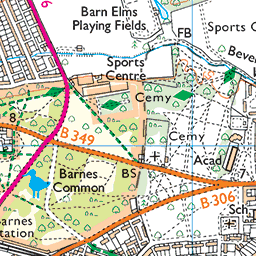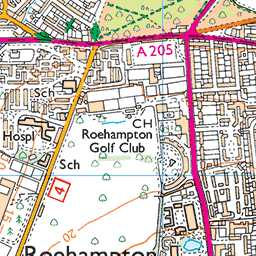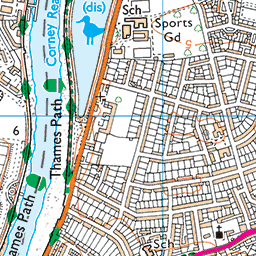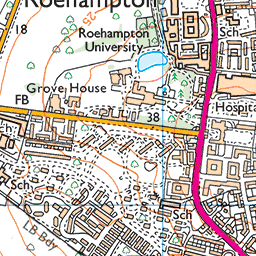Crumbs
The following is a trace of Route Haunting: A Barnes Adventure: waypoints to signpost what was, what is, and what if (we can only walk in this virtual landscape). This is an anarchival entry complimenting the live walk and zine.
If you have not completed a walk, please use the contact page to join. A zine is distributed to every walk participant.
Counter/mapping
… For the walk-curious, inspiration-seeking, or simply those wandering about this anarchive. This is not an introduction or guide.

They are wrapt, in this short passage from work to home, in some narcotic dream, now that they are free from the desk, and have the fresh air on their cheeks. They put on those bright clothes which they must hang up and lock the key upon all the rest of the day and are great cricketers, famous actresses, soldiers who have saved their country at the hour of need. Dreaming, gesticulating, often muttering a few words aloud, they sweep over the Strand and across Waterloo Bridge whence they will be slung in long rattling trains, to some prim little villa in Barnes or Surbiton where the sight of the clock in the hall and the smell of the supper puncture the dream.
Virginia Woolf, Street Haunting: A London Adventure, 1924
Route Haunting: An Introduction
Route Haunting: A Barnes Adventure is an interactive, site-specific, performative walking event exploring inter/personal relationships in the context of suburban commons. The primary interlocutors are Virginia Woolf, Adrienne Rich, Lauren Berlant, and Sara Ahmed, with supporting roles referenced throughout. The title is a play on the Virginia Woolf short story Street Haunting: A London Adventure1Woolf, Virginia. “Street Haunting: A London Adventure.” The Yale Review 17, no. 1 (October 1927): 49–62. – where an anonymous narrator wanders London in search of a pencil. What follows in this anarchive of the live event are traces, not documentation. Our path is to remain mindful of our sensory experiences. By doing this, you will learn about the process involved in how you come to know something of the world that surrounds you. Route Haunting centres subjective knowledge, unstable, relative, and difficult to transfer between individuals and collectives. The procedures enact the prompts offered by our FLINTA companions – they are building blocks towards something emergent. Unfolding through speculation and experimentation, new futures of becoming our individual-collective selves. A future that attends to both the present and historical, place-specific and mobile.
Here and in the zine, are geocoded audio-video records, field notes, descriptions, and reflections. This section aims to support the walking event by offering recorded examples to existing interactors as well as those who have not walked. All here is an invitation to further investigation. The tour runs approximately ~90 minutes and covers ~3.5 kilometres, depending on the participants’ pace and the path selected during a short self-led section. Similar to many walking tours, the walk is facilitated by an experienced and knowledgeable host. The activities encourage participant-readers (interactors) to observe how they know and experience this case study in Barnes. Route Haunting involves at least two, but no more than six interactors and a guide. This number maintains an effective flow and pace to support the identified aims and intentions. Each walk is unique in that it depends on the moment’s conditions, particularly the atmosphere and Others present. The collection of traces here covers a year of data collection, coordinating with the zine published in early January 2023. Several seasons are represented, as well as routes for and between activities.
While engaging with content, maintain awareness of the assets and limits of this digital environment. Consider how the surface of the screen and data structures behind it support interactivity and media that is underserved elsewhere. Be cautious about presuming your experience here replicates the experience there – treat these imaginings as your own and not universal, yet valuable on their own. Here, you can follow your own pace, dipping in and out of any single entry to discover connections and meaning. This allows for ‘catching up’ when unfamiliar with the territory. You can follow links quickly and efficiently if you find something interesting that needs additional context or definition. Use this if needed and maintain awareness that we all know different things at different times. This form is here to increase accessibility to multi-modal interventions such as this one. The aim is to explore how the unknown yet felt is experienced and understood across print, live, and digital settings. What is achieved depends on what you know, what you think you know, and your favoured method to engage with an/Other. Bear this in mind if you find yourself resisting or confirming your knowledge, beliefs, or experiences: these moments reveal the values and aims of own beliefs about self-actualisation.
A Start
Like most walks in England, this one starts at a train station and ends at a pub….

Barnes Station.
Loc: 51.467167, -0.241863
Grid Ref: TQ 22220 75709
Interactors meet outside the station, where the agenda is disclosed.
Muddle
Adjective: having qualities of disorder and discomfort.
Verb: bring into a disordered or confusing state.
Noun: an untidy state or collection.
The purpose of this segment is to introduce interactors to their task(s) ahead.
We learn how to read with Virginia Woolf, by her own instruction, in her own words. Photocopies of first-edition publications collage into narratives that anchor the activities throughout. Each of us identifies which segments we will read aloud. A table of contents provides references to the remaining texts as well as some guidance on how to read the parts just assigned.
From there, we walk to the first zero-point (A): “The Pitch”
An Interactive Map that references all walks and locations is available here:
Waypoints
Route Haunting I – A Field
Route Haunting II – A Private Part
Route Haunting III – A High Point
Route Haunting IV – An Enclosure
Route Haunting V: A Green
Route Haunting VI – A Rights of Way
Footnotes
- 1Woolf, Virginia. “Street Haunting: A London Adventure.” The Yale Review 17, no. 1 (October 1927): 49–62.






















